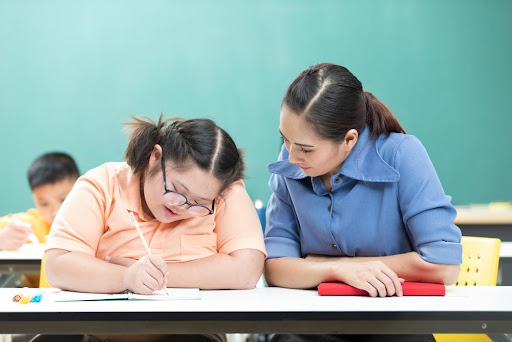At the tail end of the COVID-19 pandemic, most students have been back in physical classrooms for months. For many children in general education, the brief period of time they spent in online classrooms did little to impact the trajectory of their academic achievement. Unfortunately, the same cannot be said of children with disabilities.
Special education is difficult, even in a classroom filled with trained and passionate special educators and aides. Students with disabilities need special tools and support systems to ensure they develop and learn properly. What’s more, students with special needs have remained home longer than other kids, as many parents continue to fear the ravaging effects of the novel coronavirus on children who cannot receive vaccinations.
Research on the effects of the pandemic on populations of students with disabilities is shocking. Fortunately, parents and teachers who are aware of this issue can work together to overcome it.
Students With Disabilities Lacked Most Education Resources During the Pandemic
Many parents of children with disabilities do what they can to create a home environment that is safe and supportive of their unique needs. However, a safe and supportive home tends to utilize different tools than a safe and supportive classroom. Thus, when schools closed down and students with special needs were compelled, like the rest of the student population, to learn from home, many were separated from the resources they relied upon to focus and improve. Worse, many students with disabilities struggled to adapt to remote and hybrid learning environments, which rely on digital technology to connect students to instructors and aides. Thus, for many students with disabilities, the pandemic all but ended their experience in education for a number of months or years.
Identifying this issue, many school systems and charitable organizations sought to address these special needs throughout the pandemic. For example, the Oak Foundation worked to ease the transition to remote learning for students with disabilities. However, no single institution can provide for the millions of students with disabilities across the country — aside from the government, which has the infrastructure to ensure that students everywhere receive the resources they need to thrive. Yet, a lack of funding dedicated to special education has long prevented students with special needs from attaining the same support as their general education peers, and during the pandemic, the inequalities in funding and support all but ensured disengagement from students with disabilities.
Students With Disabilities Experienced Significant Learning Losses and Regressions
Though not enough time has passed to determine for certain the long-term effect of the pandemic on student populations, researchers are relatively certain that students with disabilities have suffered most acutely. Studies on classroom time lost found that while general education students fell behind by an average of 19 days per 100 students, students who qualify for IDEA suffered a loss of around 41 days per 100 students, as a result of higher absenteeism, a larger number of incomplete assignments, more course failures and other issues related to students with special needs lacking the resources they rely upon to engage with education.

Unfortunately, learning losses and regressions are not exactly new to instructors and aids in special education. Disparities between general education and special education have existed for decades, and most special education teachers have developed reasonable expectations for the short- and long-term performance of their students with disabilities. In the post-pandemic period, it might be more valuable for teachers to pursue an online master’s in special education to shore up skills and knowledge that could help them get their special education classrooms back on track.
Problems Caused by the Pandemic Are Likely to Linger
More than two years after the first lockdowns went into effect, many parents of students with disabilities are still reluctant to send their children back into the classroom. Thankfully, the availability of pediatric vaccines and the spread of less deadly variants is encouraging many families to relax and return to some semblance of normalcy — which includes allowing students with special needs reliable access to the learning resources they require to grow and improve.
While children are remarkably resilient, months upon months of distance from a constructive education-oriented environment will leave their mark. Parents and teachers need to work together to help students with disabilities recover from the traumas and regressions of the pandemic, which may even then affect their learning for the rest of their academic career.






